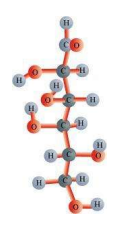Question
Easy
Solving time: 1 mins
Can you attempt building models of biomolecules using commercially available atomic models (Ball and Stick models)?
Found 6 tutors discussing this question
Discuss this question LIVE
6 mins ago
 Text solution
Text solution Verified
Verified
Ball and stick models are 3-D molecular models that can be used to describe the structure of biomolecules.
In ball and stick model, the atoms are represented as balls whereas the bonds that hold the atoms are represented by the sticks. Double and triple bonds are represented by springs that form curved connections between the balls. The size and colour of various atoms are different and are depicted by the relative size of the balls. It is the most fundamental and common model of representing biomolecular structures.

Was this solution helpful?
79
Share
Report

One destination to cover all your homework and assignment needs
Learn Practice Revision Succeed

Instant 1:1 help, 24x7
60, 000+ Expert tutors

Textbook solutions
Big idea maths, McGraw-Hill Education etc

Essay review
Get expert feedback on your essay

Schedule classes
High dosage tutoring from Dedicated 3 experts
Practice more questions from Biology (NCERT)
Q1
Can you describe what happens when milk is converted into curd or yoghurt, from your understanding of proteins?
Q2
Can you attempt building models of biomolecules using commercially available atomic models (Ball and Stick models)?
Q3
Attempt titrating an amino acid against a weak base and discover the number of dissociating (ionizable) functional groups in the amino acid.
View allPractice questions from Biology (NCERT)
Question 2
Hard
Views: 6,639
Practice more questions from Biomolecules
Question 3
Medium
Views: 5,589
Practice questions on similar concepts asked by Filo students
Question 1
Views: 5,908
Question 2
Views: 5,553
Question 3
Views: 5,240
Question 4
Views: 5,759


Stuck on the question or explanation?
Connect with our Biology tutors online and get step by step solution of this question.
231 students are taking LIVE classes
| Question Text | Can you attempt building models of biomolecules using commercially available atomic models (Ball and Stick models)? |
| Topic | Biomolecules |
| Subject | Biology |
| Class | Class 11 |
| Answer Type | Text solution:1 |
| Upvotes | 79 |




